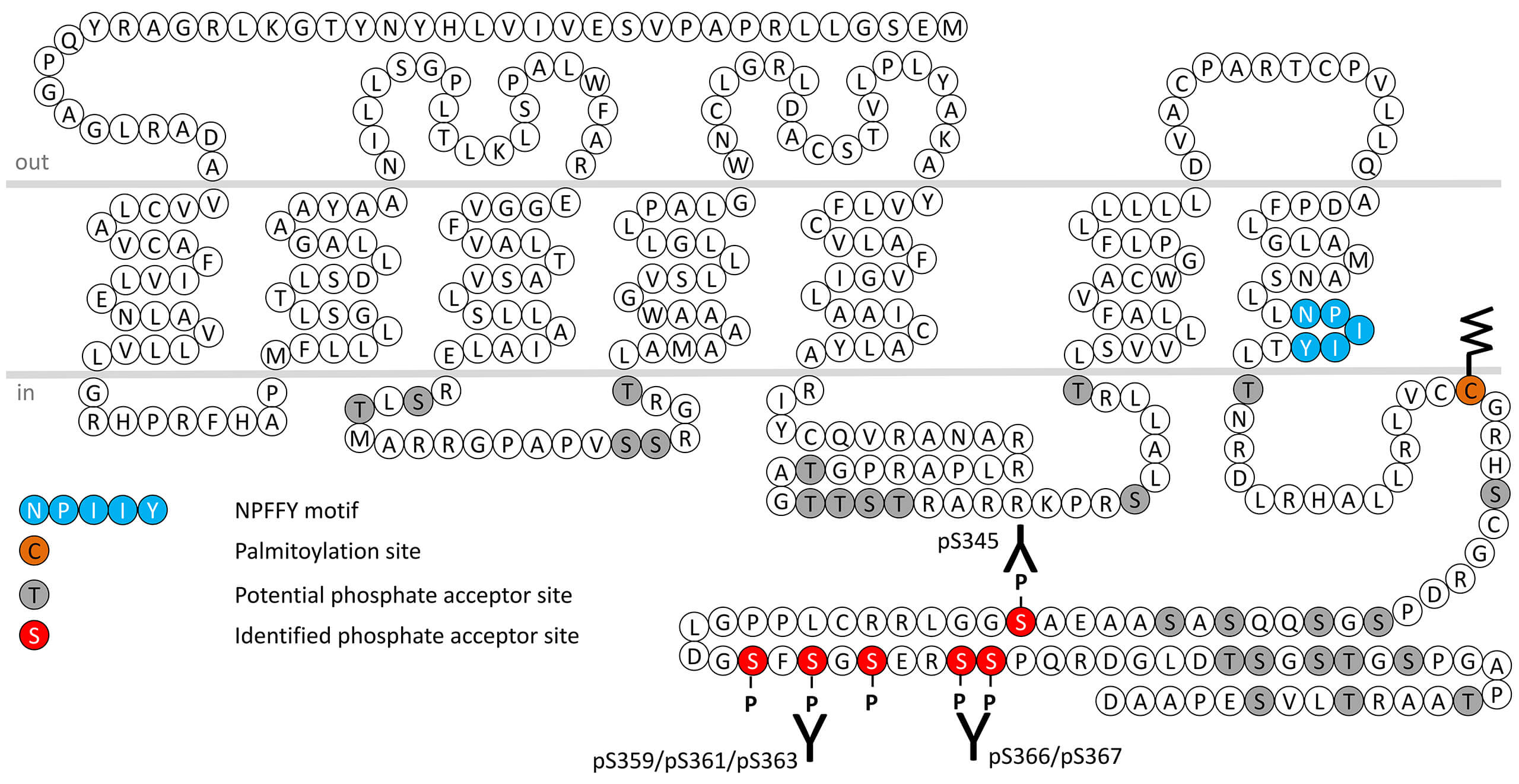Sphingosine 1-Phosphate Receptor 5 Phosphorylation Assays

S1P5 receptors are expressed in brain, spleen, peripheral blood leukocytes, placenta, lung and aorta. In the immune system S1P5 receptors regulate immune cell trafficking and mitogenesis, are involved in immune-modulation, and suppression of innate immune T cell responses. S1P5 is also a target for second-generation S1P receptor modulators siponimod, ozanimod, and ponesimod that target both S1P1 and S1P5 which are FDA-approved for the treatment of various MS forms. S1P5 receptors are regulated by phosphorylation of carboxyl-terminal serine345 (pS345-S1P5), serine359/serine361/serine363 (pS359/pS361/pS363-S1P5) and serine366/serine367 (pS366/pS367-S1P5). This nomenclature refers to the human S1P5 receptor. For more information on S1P5 pharmacology please refer to the IUPHAR database. For further reading refer to:
Chun J, Hla T, Lynch KR, Spiegel S, Moolenaar WH. International Union of Basic and Clinical Pharmacology. LXXVIII. Lysophospholipid receptor nomenclature. Pharmacol Rev. 2010 Dec;62(4):579-87. doi: 10.1124/pr.110.003111. PMID: 21079037; PMCID: PMC2993255.
Kihara Y, Maceyka M, Spiegel S, Chun J. Lysophospholipid receptor nomenclature review: IUPHAR Review 8. Br J Pharmacol. 2014 Aug;171(15):3575-94. doi: 10.1111/bph.12678. Epub 2014 Jul 12. PMID: 24602016; PMCID: PMC4128058.
Blaho V, Chun J, Herr D, Jones D, Jonnalagadda D, Kihara Y. Lysophospholipid (S1P) receptors in GtoPdb v.2023.1. IUPHAR/BPS Guide to Pharmacology CITE. 2023; 2023(1).
 pS345-S1P5 Phosphorylation Assay Kit
pS345-S1P5 Phosphorylation Assay Kit 

